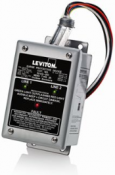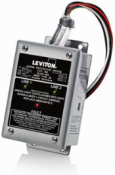670.6 Surge Protection. (Industrial Machinery)
Change Summary
- A new requirement was added for surge protection of industrial machinery with safety interlocking circuits.
| NEC® Text |
|---|
|
670.6 Surge Protection. Copyright© 2016 National Fire Protection Association |
Expert Analysis
Industrial machinery is defined at 670.2 as “a powerdriven machine (or a group of machines working together in a coordinated manner), not portable by hand while working, that is used to process material by cutting; forming; pressure; electrical, thermal, or optical techniques; lamination; or a combination of these processes.” Industrial machinery can include associated equipment used to transfer material or tooling, including fixtures, to assemble/disassemble, to inspect or test, or to package. The associated electrical equipment, including the logic controller(s) and associated software or logic together with the machine actuators and sensors, are considered as part of the industrial machinery as well.
A new requirement has been added to Article 670 applying to Industrial machinery with safety interlock circuits. These industrial machinery applications will now be required to be provided with surge protection. Type 2 SPDs would typically be the type of device associated with this Code article. By definition, a safety interlock is “a device or means that places a machine or machine component into a zero, or substantially reduced, danger-mode upon intent to access; or a device or means that will actively prevent access to a hazard upon intended access.” A very simplistic example of a safety interlock is found on a household clothes dryer. Upon opening the clothes dryer door, the high-speed rotation of the dryer’s drum will stop, and the drum will not operate with the dryer door open.
Protecting workers by protecting the industrial machinery safety interlocking systems from damage due to surges is a step forward in electrical safety.










